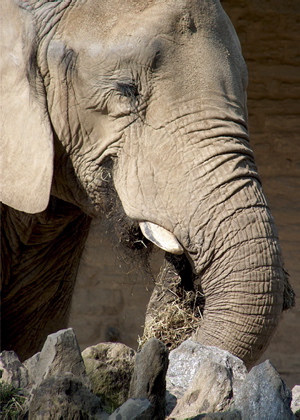
Petal.
June 19, 2008

Petal.
Animals usually live longer in zoos, of course, than they do in the wild. Needless to say, zoos regularly experience animal deaths. During the last month, however, there has been a bit of a cluster of older animals dying, some of them notable enough to get media attention. Have the deaths been routine or mysterious?
Here’s a roundup:
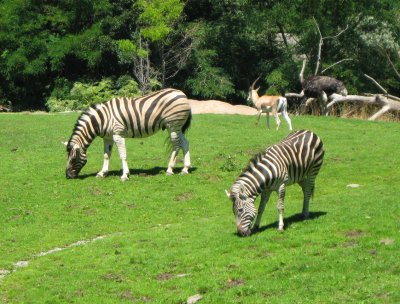
Woodland Park Zoo’s zebras.
Amy, 32, zebra.
The Woodland Park Zoo in Seattle has reported that a 32-year-old female zebra named Amy died on June 17, 2008. Zoo officials said zebras may live about 20 to 30 years in the wild. Amy had been at the zoo since 1977. A 12-year-old male and 6-year-old female zebra remain at Woodland Park.
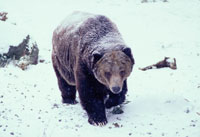
Bug.
Bug (Denali), 26, grizzly bear.
The Oregon Zoo’s lone grizzly bear, Denali, affectionately nicknamed “Bug” died on June 12, 2008. The 26-year-old 475-pound bear had lived at the zoo for 22 years. In the wild, grizzlies live 20 to 25 years on average.
The muscular bear with lush, dark brown fur and 3-inch-plus claws was born along with a brother and sister on Christmas Day 1981 at the Denver Zoo. The threesome were nicknamed “Bah,” “Hum” and “Bug.” Bah and Bug moved to Portland, Oregon, in February 1985. Bah died in 2001; zoo officials don’t know what became of Hum.
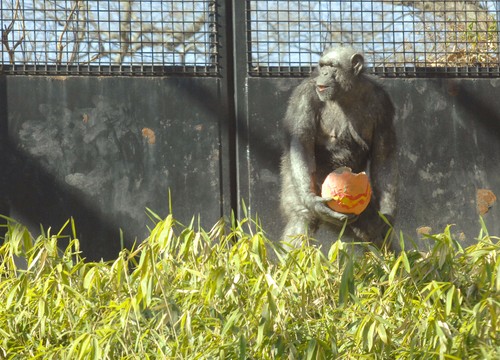
Rustie.
Rustie, 23, chimpanzee.
The Maryland Zoo in Baltimore says Rustie, a 23-year-old female chimpanzee, died June 12, 2008. Maryland Zoo officials say they’re still puzzled by the death of the largest of 11 chimps in the zoo’s troop, during an examination.
“This was quite sudden and not something we were expecting,” Rebecca Gullott, the zoo’s mammal collection and conservation manager, said. “This was a very sad occasion for us because we develop strong bonds to the animals we care for.”
Chimps typically live until their mid-40s, which made Rustie “middle-aged.” Rustie, who came to the zoo in 1995 from Yerkes Primate Center in Atlanta, is survived by two daughters: Raven, 13, and Rozi, 3. Both still live in the zoo in Baltimore.
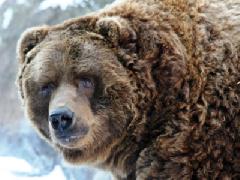
Ahkiok.
Ahkiok, 21, Kodiak bear
The Indianapolis Zoo announced that they found their Kodiak bear Ahkiok dead in his den on June 10, 2008. The 21-year-old bear was born at the Pittsburgh Zoo in 1987 and had been at the Indianapolis Zoo since 1988. Kodiak bears can typically live up to 25 years. Adult males are up to 10 feet tall and weigh up to 1,800 pounds.
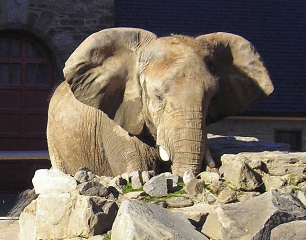
Petal.
Petal, 52, African elephant.
Petal (photos, above and at top), the oldest living African elephant in a United States zoo, died at the Philadelphia Zoo on June 9, 2008. The typical lifespan for an African elephant in captivity is early to mid 40 years. The elephant was brought to Philadelphia from Tanzania 51 years ago.
Petal was scheduled to be moved to a new home at the Pittsburgh Zoo International Conservation Center later this summer, along with two other two elephants that shared space with her in the exhibit. The two elephants, Kallie and Bette, are 24 and 25 and have spent almost their entire life with Petal. They will still make the move to Pittsburgh, which was determined was necessary to give the elephants appropriate living and roaming space.
With Petal’s passing, the oldest elephant in an American zoo is a female named Hydari, at the Hogle Zoo in Utah. Hydari celebrated her 48th birthday on June 14, 2008.
The lifespan of an African elephant in the wild is approximately 55 to 60 years.

Kay and her newborn calf, in 2007, the first giraffe born at the Auckland Zoo in 15 years.
Kay, 22, giraffe
A member of New Zealand’s Auckland Zoo’s ‘Pridelands’ family, 22-year-old female giraffe Kay, died suddenly on June 8, 2008. Kay was born at the zoo in 1986.
“Kay’s death is a real shock to us all, coming without any warning, and naturally staff are very upset. Kay has been in very good health to date. However, she is considered old in giraffe years,” says Auckland Zoo director, Jonathan Wilcken.
Kay was the mother of six offspring and her daughter Ntombi has been identified for breeding as part of the Australasian giraffe breeding program.
Tiger Boy, 24, Sumatran tiger.
Australia’s Adelaide Zoo’s oldest tiger, Tiger Boy, died on May 27, 2008. The Sumatran tiger was believed to be about 24. Tiger Boy lived between five and 10 years longer than the expected life span of a tiger in captivity.
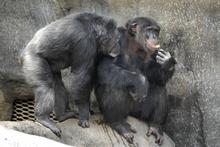
Debby, left, attempts to get a bit of food from Mugsy, on the right.
Mugsy, 17, chimpanzee
The 17-year-old popular chimpanzee named Mugsy at the Knoxville Zoo died on May 16, 2008. The chimp, whose death leaves a void in the zoo’s eight-chimp troupe, arrived at the park as a two-year-old in 1991 from the Los Angeles Zoo.
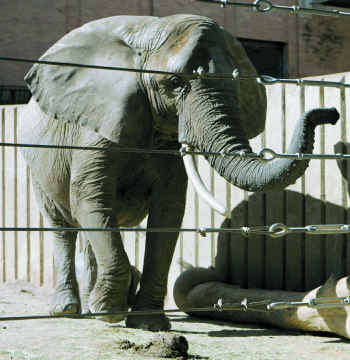
Keke.
KeKe, 39, African elephant
KeKe, who has resided at the Dallas Zoo since 2003, died on May 12, 2008. The animal’s death marked the zoo’s third major loss in less than a year. Boris, the zoo’s only lion, died in April 2008. Hildy, who was the world’s oldest giraffe, died in September 2007.
“It’s part of the reality with dealing with the aged population we have here,” said Gregg Hudson, the zoo’s executive director. Last week, the zoo celebrated the 55th birthday of Jenny, the oldest captive gorilla in the world.
KeKe’s death calls into question the future of the zoo’s other elephant, Jenny, 31. Zoo officials said they do not expect to keep her by herself long-term, because elephants are herding animals that seek companionship. They said they do not know yet whether she will be transferred, or whether another elephant will be brought in.
African elephants kept in zoos have an average life expectancy of 33.
KeKe’s death is another blow to the zoo’s planned African savannah exhibit. Three of the zoo’s iconic African animals – a main attraction for visitors – are dead.
KeKe’s death was the area’s second elephant loss in the past year. Babe, a 40-year-old Asian elephant at the Fort Worth Zoo, died in January from labor-related complications. Her unborn calf also died.
It’s unclear when the elephant exhibit will reopen.
About Loren Coleman
Loren Coleman is one of the world’s leading cryptozoologists, some say “the” leading living cryptozoologist. Certainly, he is acknowledged as the current living American researcher and writer who has most popularized cryptozoology in the late 20th and early 21st centuries.
Starting his fieldwork and investigations in 1960, after traveling and trekking extensively in pursuit of cryptozoological mysteries, Coleman began writing to share his experiences in 1969. An honorary member of Ivan T. Sanderson’s Society for the Investigation of the Unexplained in the 1970s, Coleman has been bestowed with similar honorary memberships of the North Idaho College Cryptozoology Club in 1983, and in subsequent years, that of the British Columbia Scientific Cryptozoology Club, CryptoSafari International, and other international organizations. He was also a Life Member and Benefactor of the International Society of Cryptozoology (now-defunct).
Loren Coleman’s daily blog, as a member of the Cryptomundo Team, served as an ongoing avenue of communication for the ever-growing body of cryptozoo news from 2005 through 2013. He returned as an infrequent contributor beginning Halloween week of 2015.
Coleman is the founder in 2003, and current director of the International Cryptozoology Museum in Portland, Maine.
Filed under Breaking News, Cryptomundo Exclusive, Cryptotourism, CryptoZoo News, Cryptozoology, Obituaries, Weird Animal News